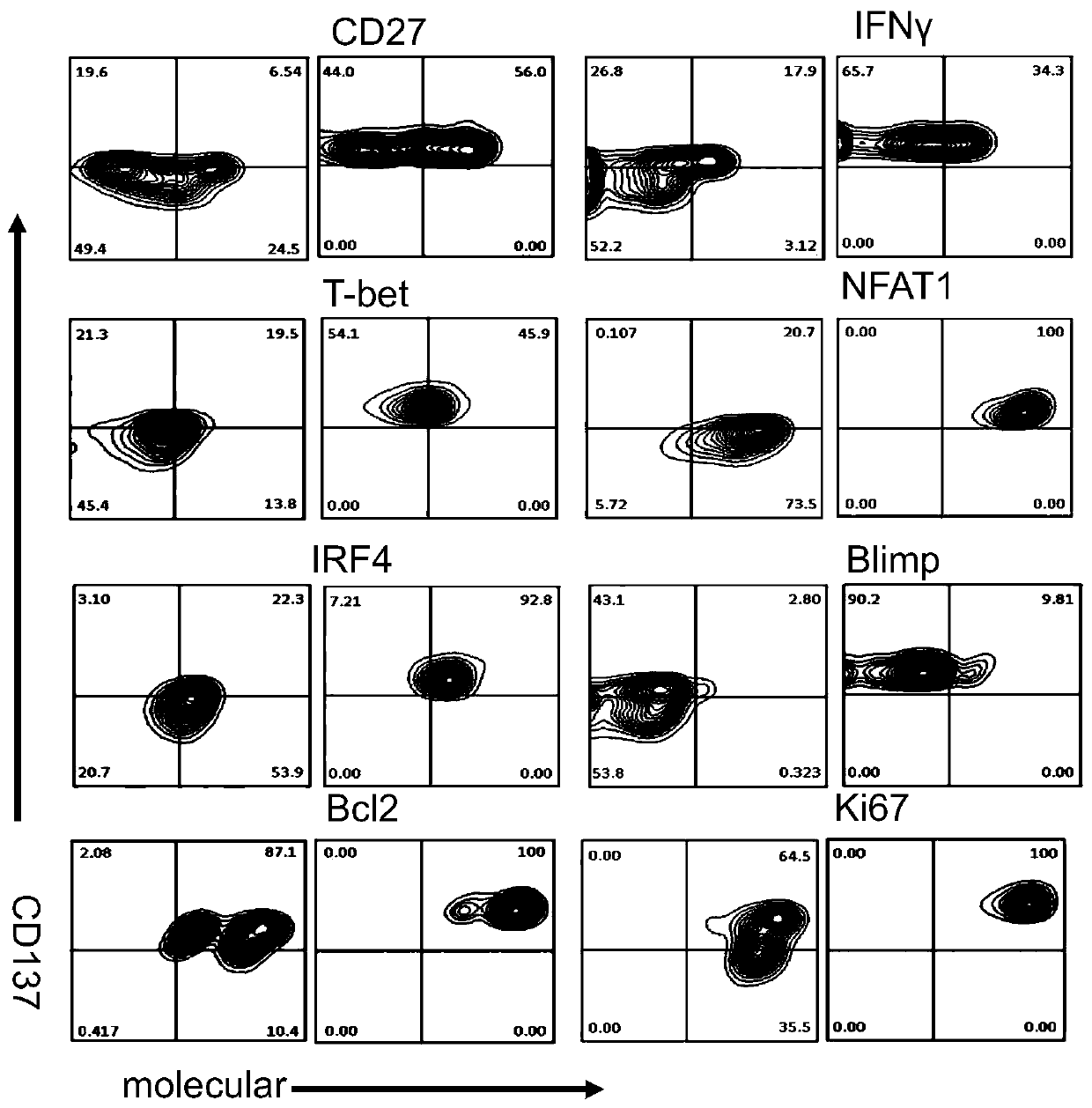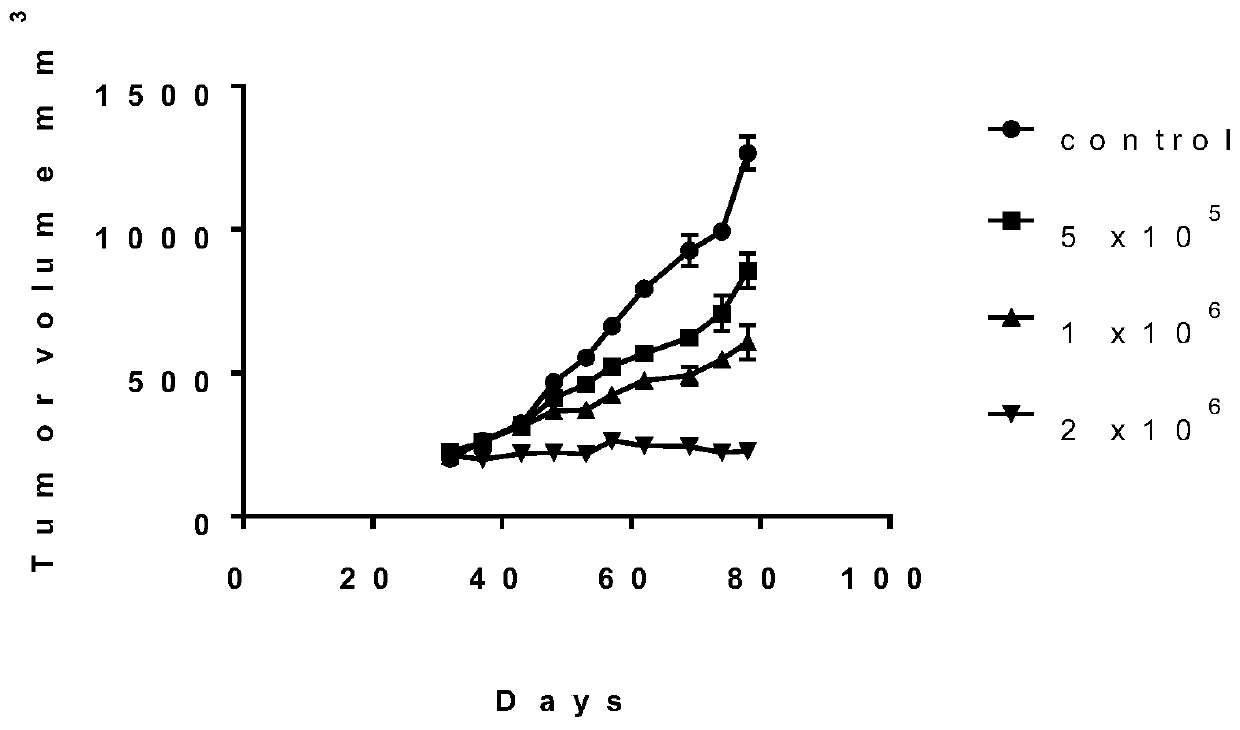Cell subset for immunotherapy of primary hepatocellular carcinoma and preparation method thereof
A technology for hepatocellular carcinoma and cell subgroups, which is applied in the field of immune cells, cell subgroups for immunotherapy of primary hepatocellular carcinoma and its preparation, can solve the problems of poor tumor effect and achieve strong tumor killing effect, good effect
- Summary
- Abstract
- Description
- Claims
- Application Information
AI Technical Summary
Problems solved by technology
Method used
Image
Examples
Embodiment 1
[0019] CD8 + T cells are key cells in the anti-tumor immune response, capable of secreting cytokines such as interferon gamma (IFN-γ), attacking tumor cells with major histocompatibility complex class I (MHCI) on their surface. CD8 infiltrating the tumor microenvironment + T cells are susceptible to inhibitory factors, which eventually lead to functional exhaustion and immune escape of tumors. In 2016, Speiser et al proposed that exhausted T cells in tumors are heterogeneous. Finding T cells with functional plasticity will be very helpful for immunotherapy.
[0020] CD3 isolated from tumors of patients with primary hepatocellular carcinoma (HCC) + CD45RO + Single-cell sequencing of cells found CD8 in tumor patients + T cells are mostly exhausted.
[0021] Experimental operation procedure: the tumor tissue and paracancerous tissue of the HCC patient were chopped and ground, filtered through a 70 μM filter, and treated with erythrocyte lysate to obtain a single cell suspen...
Embodiment 2
[0029] 1) Process the surgically resected HCC tumor tissue into a single cell suspension. Cut the tissue block into a slurry with sterile surgical scissors, add 20ml of collagenase type IV with a concentration of 1mg / ml, and place it on a constant temperature shaker at 37°C for 45 minutes for digestion. Then take it out, use a 40um filter to filter the digested product into a 50ml centrifuge tube, and place the filtrate in a centrifuge for 10 minutes at 1100rpm. Then remove the supernatant, add 2ml erythrocyte lysate (containing 150mM NH 4 Cl, 10mM KHCO 3 ,
[0030] 100uMEDTA), lyse at room temperature for 5 minutes, add 10% FBS RPMI1640 medium to 10ml, and centrifuge at 1100rpm for 10 minutes. Discard the supernatant, add 10ml of normal saline, centrifuge at 1100rpm for 10 minutes, and discard the supernatant.
[0031] 2) Perform flow cytometric antibody labeling.
[0032] The labeling methods of several markers to be tested are as follows:
[0033] a) Add the surface f...
Embodiment 3
[0041] Example 3 CD137 + CD3 + CD8 + CD45RO + Preparation method of T lymphocyte subsets
[0042] The cell population obtained by flow cytometry sorting in Example 2 was cultured in vitro to amplify tumor-specific TILs for immunotherapy of HCC. Amplification methods are described below.
[0043] Primary culture (enzymatic tumor digestion solution and tumor fragments (1-8mm) produced by mechanical grinding 3 )):
[0044] 1. After placing the tumor in enzyme digestion solution (RPMI 1640, 2mM glutamine, 10mg / mL gentamicin, 30U / mLDNase, 1.0mg / mL collagenase), immediately mechanically dissociate for about 1 minute;
[0045] 2. Incubate the solution at 37°C in 5% carbon dioxide by volume for 30 minutes, then mechanically separate again for 1 minute;
[0046] 3. After incubating again at 37°C in 5% carbon dioxide by volume for 30 minutes, mechanically disturb the tumor for a third time for 1 minute;
[0047] 4. If there is still a large piece of tissue after the third mechan...
PUM
 Login to View More
Login to View More Abstract
Description
Claims
Application Information
 Login to View More
Login to View More - R&D
- Intellectual Property
- Life Sciences
- Materials
- Tech Scout
- Unparalleled Data Quality
- Higher Quality Content
- 60% Fewer Hallucinations
Browse by: Latest US Patents, China's latest patents, Technical Efficacy Thesaurus, Application Domain, Technology Topic, Popular Technical Reports.
© 2025 PatSnap. All rights reserved.Legal|Privacy policy|Modern Slavery Act Transparency Statement|Sitemap|About US| Contact US: help@patsnap.com



